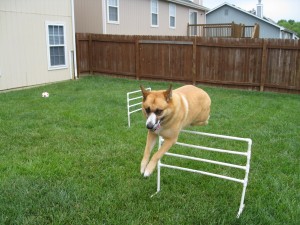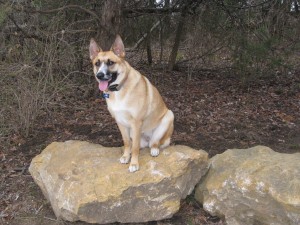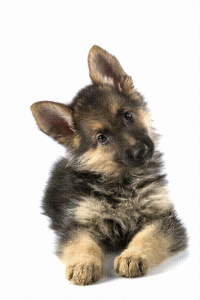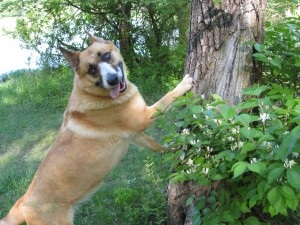 Is a new puppy on your family’s wish list this Holiday Season? I hope you have done your homework and researched this very important decision! Not that it’s a bad idea to ask Santa for a Christmas puppy…the kids are on vacation for a couple of weeks, and sometimes mom and dad are off work for several days. You have some time to help your new family member adjust to their new surroundings, and remember, your new pup’s wish is that they will be taken care of and not forgotten in the confusion and chaos of the holidays! It’s important to plan your life with your new puppy, our kids will grow up and leave the nest, but a puppy will be with us for her lifetime!
Is a new puppy on your family’s wish list this Holiday Season? I hope you have done your homework and researched this very important decision! Not that it’s a bad idea to ask Santa for a Christmas puppy…the kids are on vacation for a couple of weeks, and sometimes mom and dad are off work for several days. You have some time to help your new family member adjust to their new surroundings, and remember, your new pup’s wish is that they will be taken care of and not forgotten in the confusion and chaos of the holidays! It’s important to plan your life with your new puppy, our kids will grow up and leave the nest, but a puppy will be with us for her lifetime!
The excitement of Christmas morning can be extremely frightening to a young puppy. Between 7 to 14 weeks of age, puppies are in a critical developemental period, and fears learned during this vulnerable time can be very difficult to overcome later in the dog’s life. If you are considering a pure breed puppy, make sure you are dealing with a reputable breeder! You should be able to visit the breeder’s facility, observe the puppies and parents, and observe the breeders’ interaction with his dogs and their puppies. Good breeders will work with their pups during this critical “socialization” period to get them used to human handling, noises and other strange things in their new world. Most breeders will allow new puppies to leave around 7 to 8 weeks of age, but the social development with litter mates and Mom continues through 14 weeks. During this period pups learn bite inhibition and how to play nicely with other dogs. So wait as long as you can before taking your new puppy home. Don’t forget about your local humane shelters and rescue organizations when considering an older puppy or adult dog for your family! Many shelters and rescue groups refuse to adopt out animals as surprise gifts because of the time, attention and care needed.
Avoid the convenience of on-line or “mail order” dogs! Most reputable breeders do not sell puppies as Christmas gifts, therefore, many of the pups bought as holiday gifts are coming from pet stores or were ordered “on-line” – and were originally supplied by “puppy mills”! In a rush to cash in on the holiday season by supplying puppies that have not spent enough time with their littermates and mama, and often display genetic weaknesses due to mass-breeding and inbred health issues!
Consider the following points in your decisions:
- It’s hard to properly care for a new puppy during the holiday chaos and confusion.
- New puppies should not be over-handled. Down time and lots of naps are needed in a quiet, relaxed environment.
- Dangers are everywhere! During the holidays, there are choking hazards, poison hazards and breaking hazards – everywhere!
- People are going in and out. Your pup may go out with them and not even be noticed!
- Hourly housetraining bathroom breaks in the midst of all other activities!
If you have made the decision to get a new puppy for the family, consider waiting until after the holidays when you can devote the time, attention, surpervision and care necessary. Give the kids a stuffed animal pup with a note that says “We’re getting a puppy!” Or, wrap up several separate items to open on Christmas morning such as, a collar, leash, puppy toys or a package of treats to build the excitement for the after-holiday arrival!
Last, but not least, I would be lax in my duties if I didn’t remind you to contact a professional dog trainer to get your new “best friend” off on the right PAW!!
Have a Wonderful Christmas and Holiday Season!
and…Enjoy Your Dog!
WOOF!!



 Consistency is a major part of successful dog training. Consistency in training accomplishes three important points:
Consistency is a major part of successful dog training. Consistency in training accomplishes three important points: There are lots of ways that people choose a new family dog. Some may search the newspaper for advertisements from breeders who are selling new puppies; others find breeders via listings on the Internet, while still more may simply purchase a puppy from a local pet store. Perhaps the best method, however, in terms of being helpful to society in general is to adopt a dog from a local animal shelter.
There are lots of ways that people choose a new family dog. Some may search the newspaper for advertisements from breeders who are selling new puppies; others find breeders via listings on the Internet, while still more may simply purchase a puppy from a local pet store. Perhaps the best method, however, in terms of being helpful to society in general is to adopt a dog from a local animal shelter.